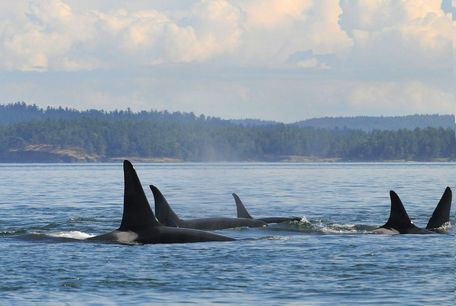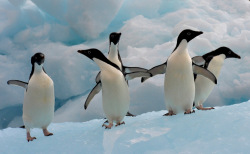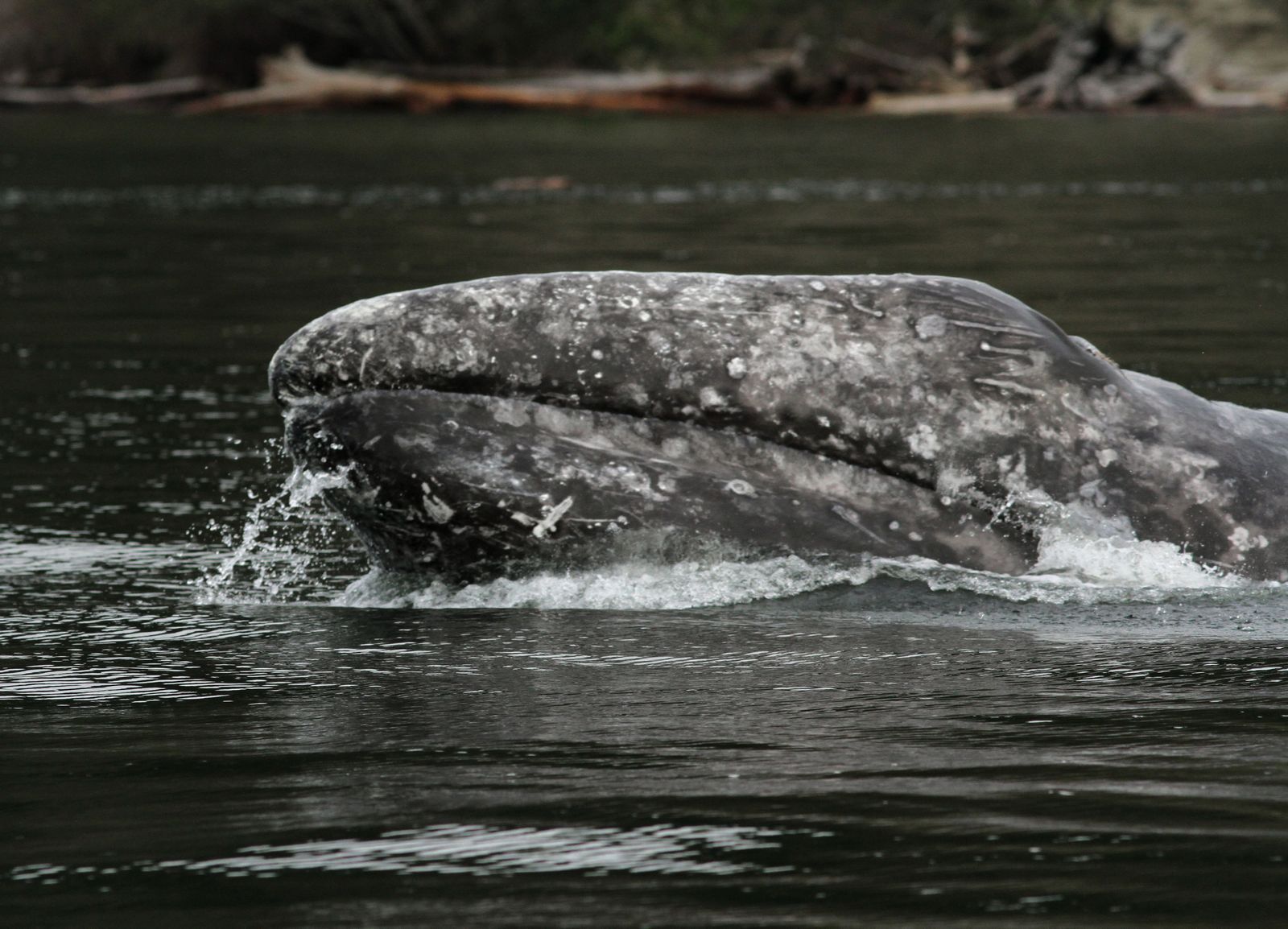
Members of L pod, one of the Salish Sea’s resident orca pods, heads north up Boundary Pass to Georgia Strait.
By Bill Sheets, The Herald
Forty years after the passage of the federal Endangered Species Act, the state and Snohomish County remain squarely on the edge of that preservation frontier.
More than 40 animal species in Washington are listed by the federal government as either endangered or threatened under the law, signed by President Richard Nixon on Dec. 28, 1973. Many others are listed as species of concern.
Among creatures found in waters in and around Snohomish and Island counties, seven species of fish or marine mammals are listed under the act.
Southern resident killer whales and bocaccio rockfish are listed as endangered. Puget Sound chinook salmon, Puget Sound steelhead, bull trout, yelloweye rockfish, canary rockfish and Pacific smelt are threatened.
Nationwide, 645 species of animals and 872 plants or trees native to the U.S. are listed as threatened or endangered, according to the U.S. Fish and Wildlife Service.
Of the local fish species and orcas, salmon and bull trout were listed in 1999, the killer whales in 2005 and the other fish species in 2010.
Reasons cited for the decline of the fish are many, including pollution, overfishing and loss of habitat. In the case of killer whales, dwindling supply of their diet staple — chinook salmon — is a major contributing factor, officials say.
Supporters claim many success stories for the Endangered Species Act, with bald eagles and peregrine falcons among the more prominent examples.
Gray whales were taken off the list in 1994 and steller sea lions just this year.
According to U.S. Fish and Wildlife, 99 percent of the hundreds of species listed since the Endangered Species Act became law have been prevented from going extinct.
The law protects species by preventing them from being harmed or captured and by regulating human activity in their habitat areas.
Perhaps the best feature of the Endangered Species Act, some say, is that it keeps the species’ problems in the public spotlight.
“It has pulled people together to talk about what to do,” said Daryl Williams, environmental liaison for the Tulalip Tribes.
Recovery for many species, however, is slow and not guaranteed.
“Listing is a way of sort of planning for recovery, if you will,” said Brent Norberg, a marine mammal biologist with the National Marine Fisheries Service in Seattle.
The southern resident orca population, for example, had 88 whales in 2004, the year before it was listed under the ESA. The population now is down to 80, according to the Orca Network, a Whidbey Island-based group that tracks the whales.
“Because they’re so long-lived and their recruitment is so slow and their numbers are so small, it’s going to be quite a lengthy process,” Norberg said.
William Ruckleshaus, the first director of the Environmental Protection Agency under Nixon in the early 1970s, is 81 and lives in Medina.
The EPA was created and Endangered Species Act was passed after pollution and declines in species had reached alarming levels, Ruckleshaus said. The Cuyahoga River in northeast Ohio, for example, famously caught fire in 1969.
“The public demanded something be done about it and the president responded,” he said.
He said the endangered species law might have overreached.
“We passed laws that promised levels of perfection that probably weren’t possible. It’s hard to do it, to be honest with you,” Ruckleshaus said. The law has been refined over time, he said.
Ruckleshaus works part-time for Madrona Venture Group, a venture capital firm, and has served on the boards of the Puget Sound Partnership Leadership Council and the Salmon Recovery Funding Board.
“The motivation behind the ESA couldn’t have been any higher — we want to preserve all living things on Earth. Who’s against that?” Ruckleshaus said.
“I think it’s been very positive overall,” he said. “It’s shown how what we believe to be innocent acts can have devastating effects on species.”
The Endangered Species Coalition, a Washington, D.C.-based environmental group, has issued a report titled “Back from the Brink: Ten Success Stories Celebrating the Endangered Species Act at 40.”
Among those stories is perhaps the most high-profile recovery: the national symbol, the bald eagle.
The eagle’s numbers in the 48 contiguous states declined from roughly 100,000 in the early 19th century to only 487 nesting pairs in 1963, according to the U.S. Fish and Wildlife website.
Several measures were taken to help the eagle, beginning with the 1940 Bald Eagle Protection Act, which made it illegal to kill an eagle. The pesticide DDT, found to have thinned the eggshells of eagles and other birds, was banned in 1972.
Still, “listing the species as endangered provided the springboard” for the U.S. Fish and Wildlife Service to accelerate recovery through captive breeding, law enforcement and nest-site protection, according to the agency’s website
Bald eagles rebounded and they now number about 10,000. The eagles were taken off the list in 2007.
The Endangered Species Act’s effect on salmon is not so clear, the Tulalips say.
Development that destroys habitat is not restricted enough to offset the losses, Williams said.
“We’re still losing habitat faster than we’re gaining it from restoration,” he said.
The problem is inconsistency in rules among various agencies involved in environmental protection, said Terry Williams, fisheries and natural resources commissioner for the tribes.
Also, because of the ESA, some habitat restoration projects have to jump through the same hoops as other construction, causing delays in measures that could help fish, Daryl Williams said.
“I kind of have mixed feelings about it,” he said.
Those restrictions may be a necessary evil, said Norberg, of the fisheries service.
For example, if creosote-soaked logs are being removed from a waterway, if it’s not done properly, it could result in creosote finding its way back into the water, “so it does as much harm as it does good,” he said.
Restrictions also can affect landowners’ use of their property. This not only angers some property owners but can defeat the intent of the law, said Todd Myers, environmental director for the Washington Policy Center, a right-leaning think tank in Seattle.
Because the law governs use of land where a listed species is found, some landowners take steps to eliminate habitat for a species on their property so it won’t be seen there, Myers said.
“You get a regulatory stick that puts landowners at odds with habitat recovery,” he said.
A better way, he said, is to reimburse landowners for measures taken to preserve or promote habitat, he said.
“That at least takes a step toward making a landowner a partner as opposed to an opponent.”
Despite the ESA’s flaws, “it is working well in terms of bringing all the various parties together to talk and to plan accordingly,” Norberg said.
The decline of the salmon might not be reversed without it, Ruckelshaus said.
“It is an extraordinarily complex problem,” he said. “But for the ESA I doubt we would have paid the attention to it we have, and I think that is absolutely necessary for it to recover.”






